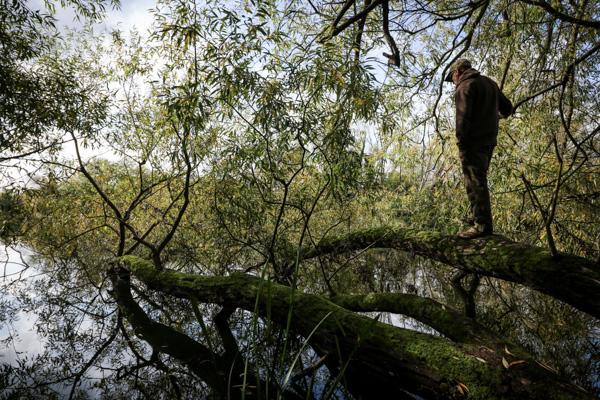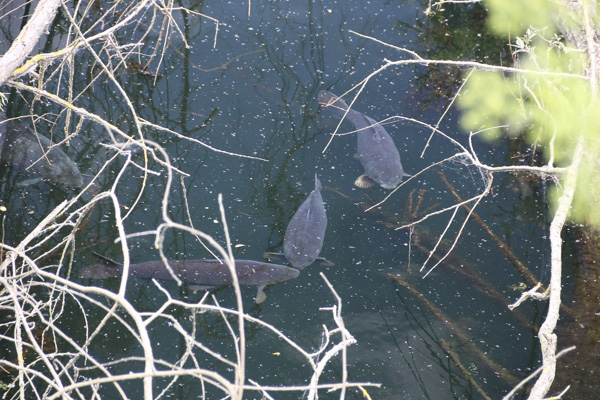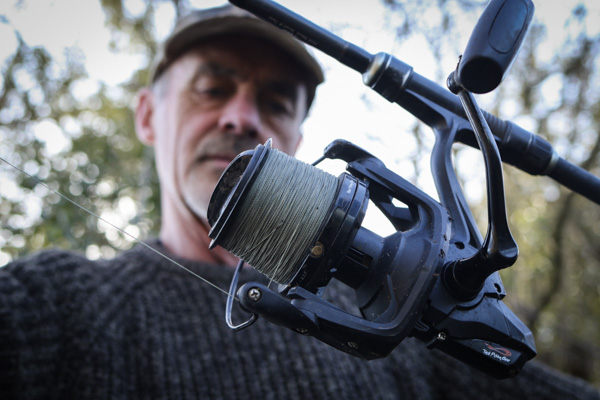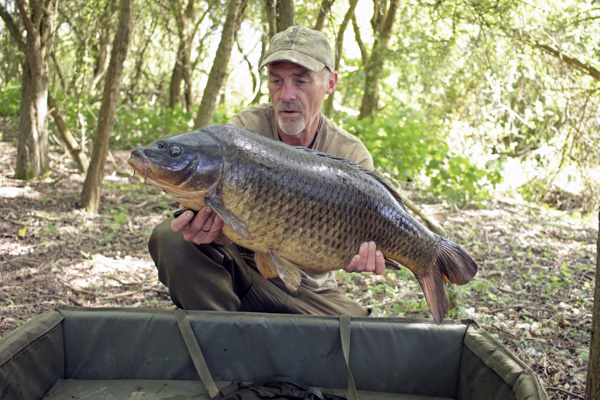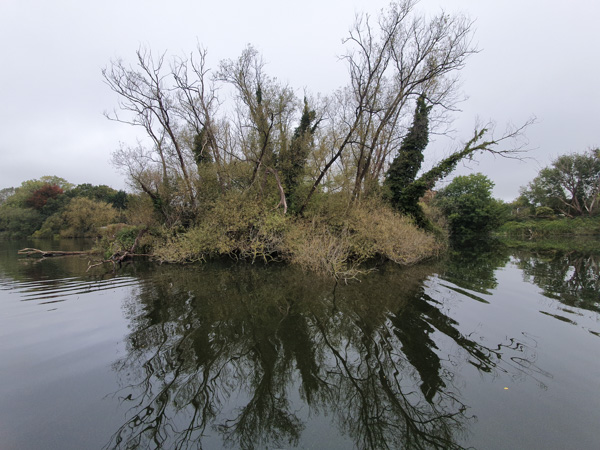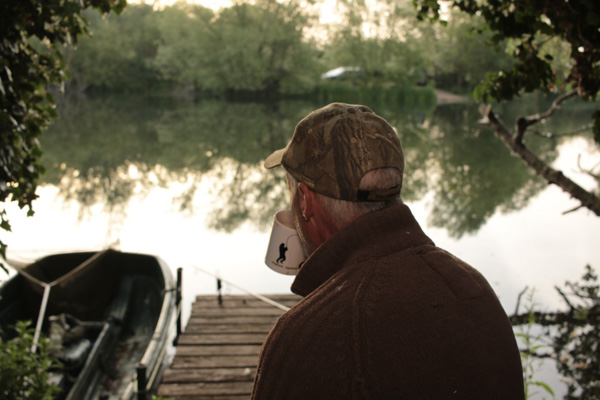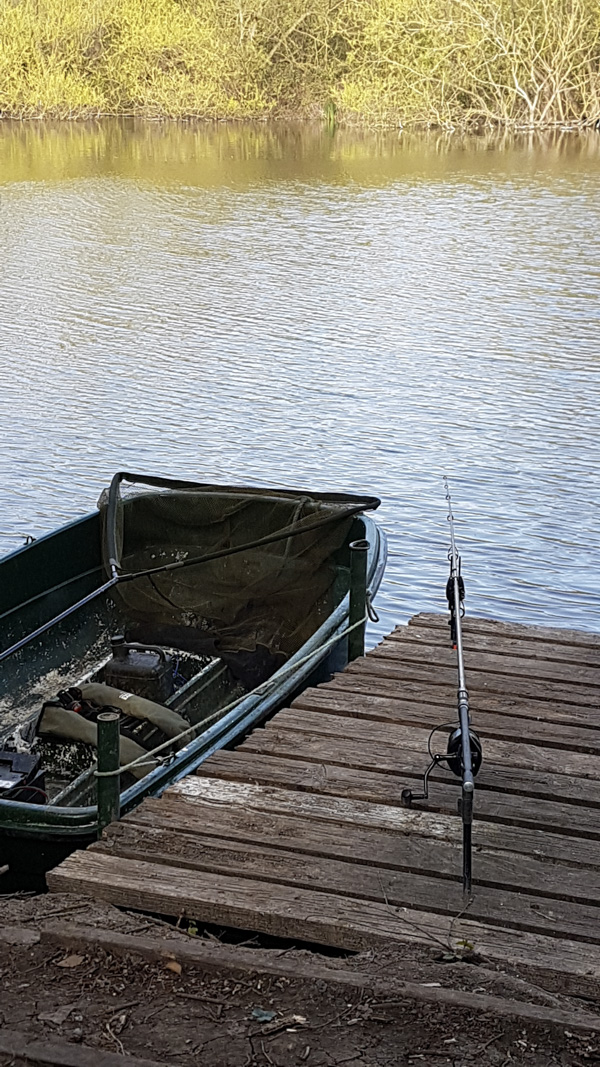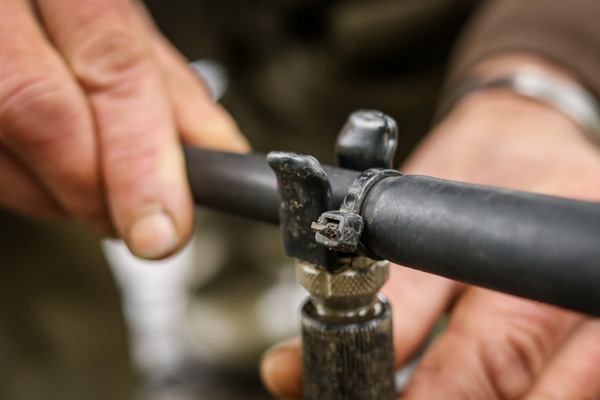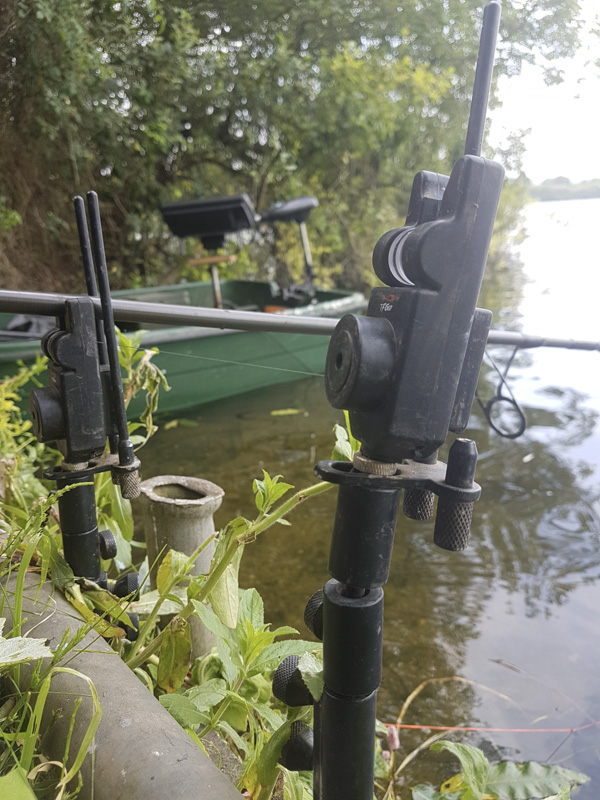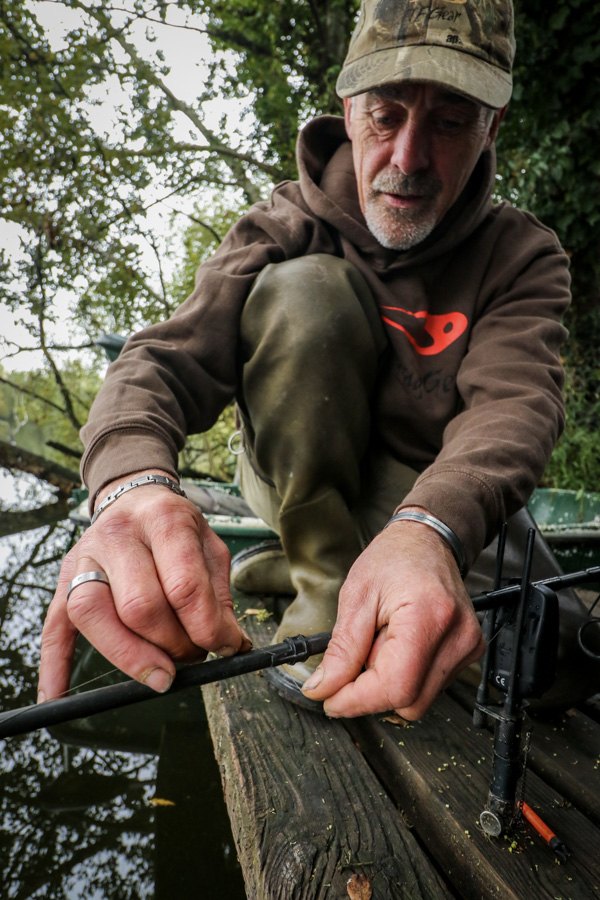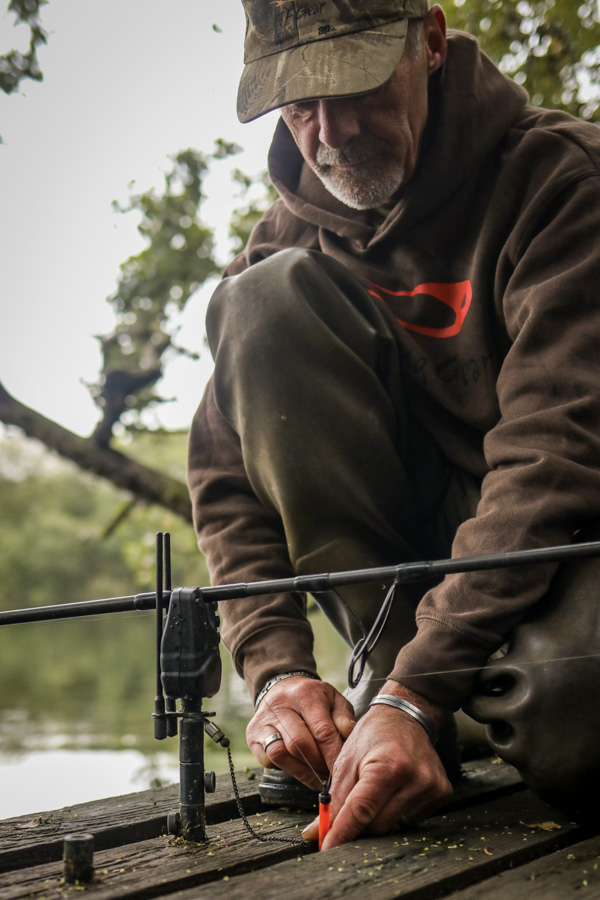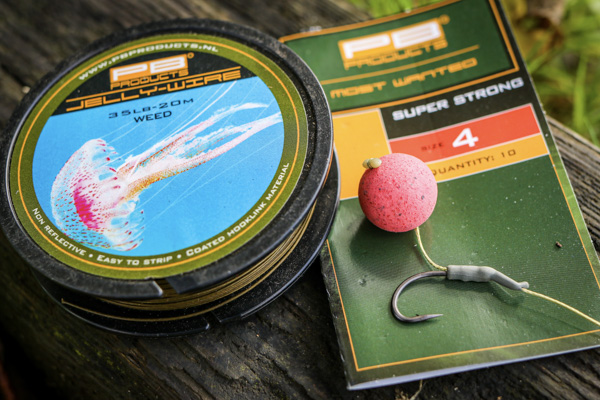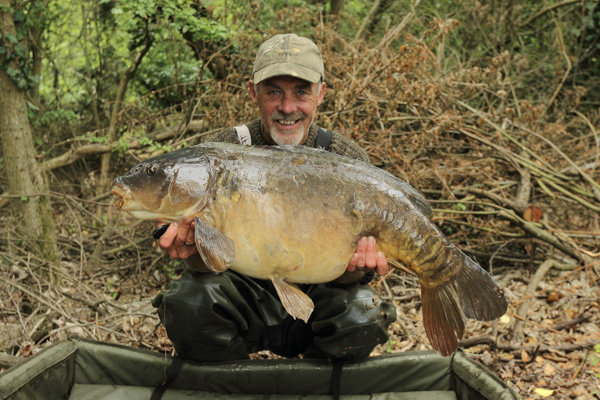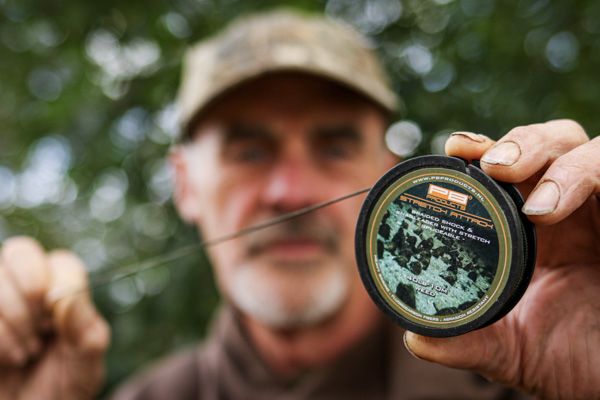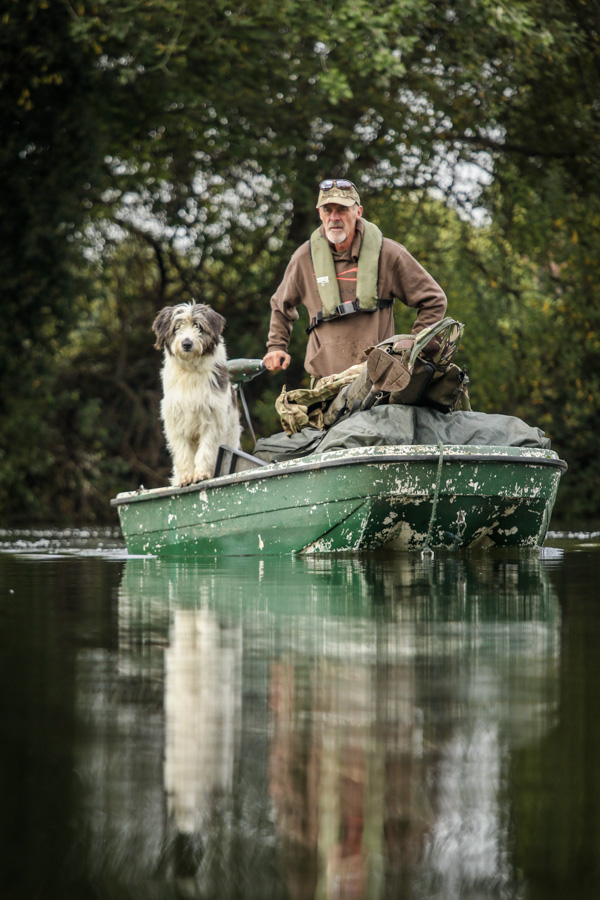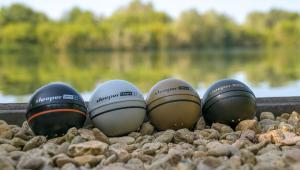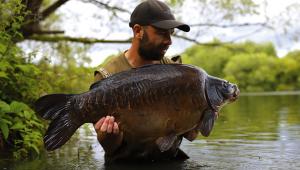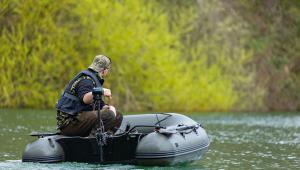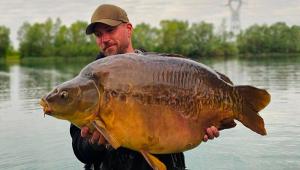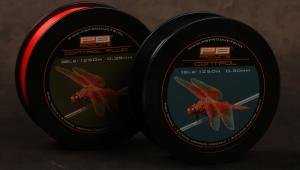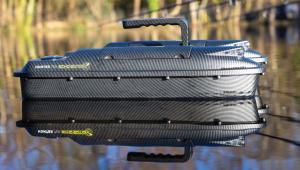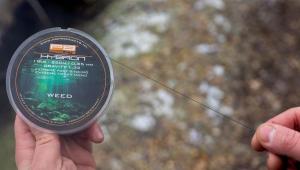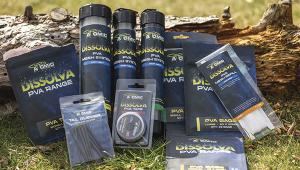INSIDE THE MIND | Dave Lane's Snag Edges
A lot of the big pits that I fish have large areas of snags, as maintaining such a large and wild environment is not logistically possible. Trees will rot over the years and snap off in the big winds of autumn, falling into the margins from either the banks or islands. Within a very short space of time the carp will start to use these as a sanctuary, hiding from angling pressure or, just as often, as a safe place to spend their time without worry from predation of any sort.
During the late part of spring and early summer, on the lead up to spawning, it’s not unusual to find all of the big females hanging out under one snag in a big group for weeks on end. If there are multiple snags around the lake then you also find ‘favourite’ areas for specific fish and these can be year after year, the same old characters in the same spots, which is perfect if you are targeting a specific carp from among the pack.
In winter, when the water goes gin clear and the fish feel exposed, the snags can come back into play as a safe zone once more and are often worth checking out no matter how cold it becomes. In fact, I think there may be some inherent warmth in the calm and sheltered waters in and around snags, particularly dense reed beds, which the fish seem to love in the winter.
On a lot of lakes where you have no real snaggy fallen trees or bushes you may still have thick beds of Norfolk reed or similar; these act in exactly the same way, giving safety, shelter and cover for the carp.
The simplest form of snag fishing is where you are fishing with a direct pull and the only snag is the one you are up against. In this case you just need to prevent the carp taking any line and get enough back on to the spool to keep him clear; tight clutches and braid will make this achievable every time.
Unfortunately this is not always the case and lots of other factors need to be taken into account.
I think the best way to explain these is to give an actual account of how I overcame some of the trickiest snags I have fished in recent times and highlight the various things I needed to take into account.
These little ‘snag edges’ are transferable into all situations and I really think that all of them are essential to safely fish in potentially dangerous situations. After all, the safety of the fish is paramount and it’s really not acceptable to put a bait into an area where you have anything less than a 100 per cent chance of landing them if all goes to plan.
The situation I had was during last spring on the big lake I have been fishing for the previous three years.
The carp almost lived in one certain snag throughout that spring, at least the ones I wanted to catch seemed to, but there was nowhere on the bank that gave a safe angle to fish from so I needed to make somewhere. But first I needed to make sure that I could actually land anything I hooked.
I would never fish near to a snag without a plan of landing; this is not just PC for the magazine, I actually sit there and work out every angle and try to figure out the answers to every problem before it arises.
Landing Plan
If you can use a boat, at least for one good look, then that is always going to help but, if not, you can still scope it all out with a spare rod.
Just use a braided main line and a bare lead (no rig) attached via a weaker link, like a stretched out metal snap link clip for example, although a bare lead will seldom become snagged anyway.
Cast all around the front of the snag and any other snaggy areas to work out where the fish will run to once you have stopped them reaching target A, which is always going to be the closest snag to your baited spot.
As soon as a carp is denied the first sanctuary it will head for the next closest and you may have to work out exactly how many turns of line you have to recover before he gets there, as was the case for me last year. Not only was there the snag I fished to but, off to the left and 15 yards closer, there was another island, festooned with old timber from fallen trees. I realised I would need 15 yards back on the spool before the fish could kite 60 yards, which is easily achievable as long as you are prepared; hook and hold… lean left… crank like mad until he falls short of the island and then the open water channel, finally jumping into the boat for the netting to avoid my own marginal snags – what could possibly go wrong?
Lots is the answer to that one, lots of tiny details that needed to be ironed out before I even cast or lowered a bait.
The landing net for a start, that needed to be somewhere that was instantly accessible as I wouldn’t have time to reach behind me or walk up the bank to retrieve it. There also needed to be a net in the boat should I need to utilise that at the last minute. I would need an anchor in the boat to tether myself in open water and not get dragged back to the snags. I would also need a spare headtorch near the rods because there wouldn’t be time to find it should I get a bite in the dark.
Every split-second counts in these situations and nothing can be left to chance. Its vitally important to NEVER be very far from the rods, just a few metres really, particularly at expected bite times.
As it happened the plan was a sound one, especially after I removed the longest of the sub-surface branches on the island to my left, reducing the distance I needed to recover should the carp kite that way.
A major stumbling block in every imaginary scenario that I played through my head was the other lines. Even if I only used two rods, I could still see no real situation whereby the other line would not be in the way. I was going to be hooking them on the far margin, bullying them across the swim close to the left hand margin and then boating out to the right to land them in the mid channel. It just wouldn’t work if another line was in the way so, in the end, I fished the swim for weeks on end with just one single rod.
Every swim requires a different plan, though; sometimes it is best to let the fish kite on a tight line and then loosen the clutch to encourage them to run in a certain direction, sometimes just pulling them in the direction you don’t want them to go will ensure that they turn and run the way that you were wanting. In fact this last trick is one I employ often as a carp will, generally, try to go against the direction of pull and they can be easily fooled as long as you have the bottle to pull in a direction that might, at first, seem like madness.
Before I could put any form of landing plan into operation, though, I needed to tick off all the other boxes first.
Line Angles
The chosen spot would have to face directly at the snag rather than at an angle as fishing sideways along the bank to a snag is almost a guaranteed disaster. Any fished hooked at such an angle can simply kite into the snag and there is nothing you can do to stop it. Snags have to be fished straight on, that’s just a simple fact of life and mechanics. The only spot that offered this angle was about 80 yards away on a small island.
At first I made a schoolboy error when, after two days of cutting and preparing, I thought that the resulting spot was good enough. The error was that I left the steep bank at the front of the swim and had to fish my rod tips a lot lower than the reels, which ended in disaster on the very first bite. I don’t know how I ever thought this would be a good idea; as a serial braid fisherman I should have realised what would happen.
Rod Angles
The rod should always be within a few degrees either way of level, and by that I mean level with the angle of the line as it stretches out to the snag. If the tips are too high the rod butt can catapult up out of the rests and shoot forwards into the alarm, or even the lake.
If the tips are too low, as in lower than your reels, the rod simply gets lifted straight out of the alarm and you rarely even get an indication before it’s all over, as was the case on that first take from the island.
After this I devised a more complicated plan that involved building a jetty at the front of the swim and carving two big steps to reach it, big enough that I could actually put a low chair on them during bite times and be as close as possible to the rods.
With a level setup and the rod butt firmly clipped in place, there would be no way a fish could gain any line on the bite.
Rod Security
Until you have witnessed the full force of a take fishing locked up with a non-stretch braid, you cannot really appreciate just how inadequate a normal setup can be. Rod pods are just slightly worse than useless, wide fitting back rests, soft rubber rests or anything that does not totally secure the butt will definitely let you down at some stage. There are many types of back rests on the market that are built for snag fishing but the one main job they must perform is to prevent the rod being pulled forwards, no matter how much force is exerted. I like to use a ‘belt and braces’ approach and have a locked in butt rest and the addition of either a cable tie around the rod to add a ‘snag point’, or you can use one of the many lock clips such as the PB one in the photo.
As you can see from the picture here, the results of an unsecured rod can be brutal; this fish smashed the reel into the alarm so hard that it destroyed the bail arm, snapped off one snag ear, broke the bobbin chain and actually bent the bankstick; all of this in a split second.
So, with my new and level setup on the jetty and my rod firmly secured I had to think about the next potential stumbling block.
Bite Indication
With my rods level on the new jetty, the butts secured, and the clutches screwed up with tightrope like lines to prevent the hooked fish reaching the snags, how was I going to know if I had a bite?
If you leave it until the rod is shaking and the alarm eventually lets out a single but begrudging bleep, then the fish is already under full power and thrashing away out there causing no end of problems – you need to know instantly if you get a pick-up.
Just fishing a tiny drop on the bobbin is no good as you lose the tension in the line and any false bleeps due to liners, wind, weed etc will just desensitize you to the bite, when it does eventually come. I like to have not a single indication until a pick-up and then be ready to throw myself at the rod at the first sign.
The answer is quite simple but, even so, a method I rarely see anyone else putting into action.
Small plastic line clips, such as the ones from Solar Tackle, can be fished in front of the alarm allowing you to set up with a short drop on the bobbin, not enough to let the fish reach the snags but just enough to spin the wheel on the buzzer to signal a bite. The carp is always going to head for the snag, every single time, so it will simply ping out of the clip, smack the bobbin up to the alarm and then hit the tight clutch, only giving the fish about four inches of movement. It doesn’t need to be tightly clipped, just enough to hold the line and prevent false bites. Even if the fish chooses a different direction, such as straight back at you, braid will always register a forward bite as it doesn’t suffer from the elasticity of mono, in other words it doesn’t ‘ping’ back, it just follows its shape through the water.
Tackle
Although I have left this until last, it is obviously vitally important and no amount of forward planning will ever compensate for the wrong tackle for the situation.
Monofilament lines are, in my opinion, not fit for task in snag fishing situations. The amount of inherent stretch in a nylon line makes any hit and hold situation unrealistic, as you would have to fish so far back from the snag to allow for the stretch that you would not be presenting in the right areas. Braid is a must-have item and, obviously, something nice and strong, and I prefer at least 30lb test.
Hook links need to suitably strong as well; it’s always 35lb Jelly Wire for me but that is just personal choice as it has never let me down.
With all of this taken into account it would be madness to use your usual fine wire size 8 or even 6 hooks; it’s not so much the size but the strength and wire thickness that would be an issue. Whatever I choose I like to up the wire gauge so that there is no chance of it opening out.
However, after saying all of the above, and planning every minute detail, there can still be nasty surprises lurking around every corner.
The first few fish I hooked from the new platform all ended up safely in the net, just as they should do otherwise it would have been scrapped as an unfishable situation. In fact, I was totally confident in every aspect of my approach until one fateful day when I lost two on the bounce without even putting a hand on the rod!
It was literally over within a split second both times; one hook pulled, and one opened out, which is practically impossible, but it happened anyway, so I had to have a little think about where the problem lay.
It didn’t take too long to find the answer, it was the speed of the take and the fact that there was zero give in the setup. Unlike an actual playing situation, where the bend in the rod acts as a buffer, I was getting done before that could come into the equation. If you imagine playing a big and hard fighting carp and then pointing the rod straight at it as it powers off… it wouldn’t last long would it?
The solution came about after a chat with Jonathan at PB and it came in the form of a slightly elasticated leader material called Stretch Attack. This stuff, although not stretchy enough to give the carp any real distance advantage, just provided enough of a buffer to withstand that first manic hit on the rod as the fish powered off towards the snag.
I found about six feet of the stuff worked perfectly and was easily spliced into the setup in place of a traditional leader.
Now I have the complete setup and one that I will be confident to use anywhere that there are snags; every single part of it has been tested and proven and it will work wherever, as long as I always have a plan for landing before I start.
So, snag fishing can be safe… should be safe actually, it just needs a fine attention to detail to make it so, a lot of forethought and a carp safely in the net, perfect.
- Log in or register to post comments
